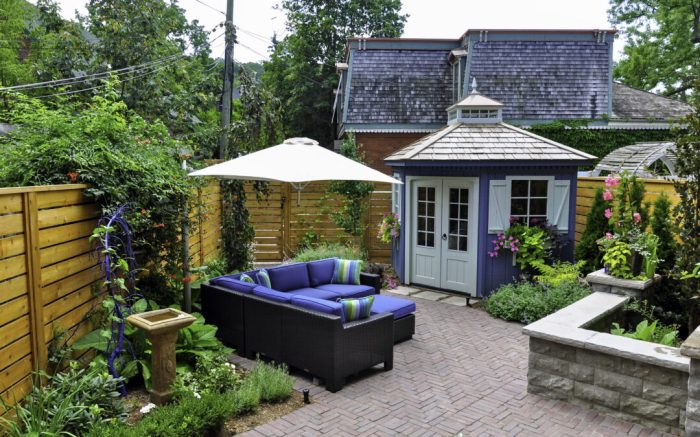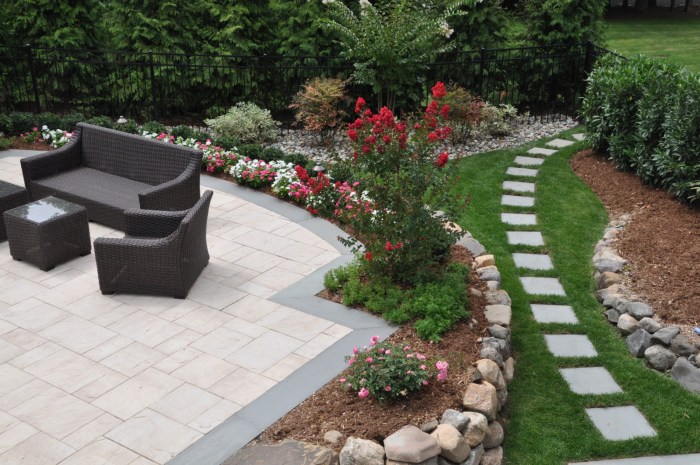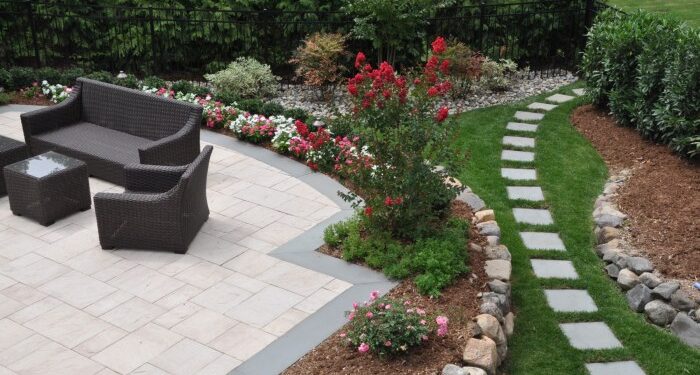Exploring innovative ways to enhance small yards, this introduction delves into the art of landscape design, offering practical tips and creative solutions to make the most of limited outdoor spaces. From vertical elements to functional zones, discover how to create a harmonious and visually appealing landscape that maximizes every inch of your yard.
As we navigate through the intricacies of designing small yards, you'll uncover expert insights and inspiring ideas to elevate your outdoor space to new heights.
Importance of Landscape Design for Small Yards
When it comes to small yards, the right landscape design can make a world of difference in maximizing space and creating a visually appealing outdoor area. Here are some key reasons why landscape design is crucial for small yards:
Key Benefits of Well-Designed Landscapes in Limited Spaces
- Optimizes Space: A well-thought-out landscape design can help make the most of every inch of your small yard, creating functional areas for relaxation, entertainment, and gardening.
- Enhances Visual Appeal: By incorporating elements like plantings, pathways, and focal points, a well-designed landscape can enhance the aesthetics of your small yard, making it a more inviting and beautiful space.
- Increases Property Value: A thoughtfully designed landscape can significantly increase the value of your property, making it more attractive to potential buyers in the future.
Tips on Maximizing Space Through Design Elements
- Vertical Gardening: Utilize vertical space by incorporating trellises, hanging planters, or wall-mounted planters to add greenery without taking up valuable ground space.
- Multipurpose Furniture: Choose furniture pieces that serve more than one function, such as a bench with built-in storage, to maximize both seating and storage in your small yard.
- Use of Mirrors: Strategically places mirrors can create the illusion of a larger space by reflecting light and greenery, making your small yard feel more open and expansive.
Incorporating Vertical Elements

Vertical elements such as trellises, arbors, and vertical gardens can be excellent additions to small yards, providing both practical and aesthetic benefits. These elements not only help maximize space but also create visual interest and add a sense of height to the landscape.
Plants that Thrive in Vertical Spaces
Vertical gardening opens up opportunities to grow a variety of plants that thrive in such conditions. Some examples of plants that do well in vertical spaces include:
- Climbing roses: These beautiful flowers can add color and fragrance to your vertical garden while climbing up a trellis or arbor.
- Ivy: Ivy is a versatile plant that can be trained to grow vertically, adding greenery and texture to your vertical elements.
- Clematis: Known for its stunning blooms, clematis is a popular choice for vertical gardening, adding a pop of color to the space.
Benefits of Vertical Elements
Vertical elements not only allow you to grow a wider variety of plants but also help in creating a dynamic and visually appealing landscape. By incorporating trellises, arbors, or vertical gardens, you can make the most of limited space, adding depth and interest to your small yard.
Selecting the Right Plants
When it comes to landscaping small yards, choosing the right plants is crucial to maximize the limited space available and create a visually appealing outdoor area.
It is essential to select plants that are suitable for small yards to ensure they thrive in the limited space and do not overcrowd the area. Opting for plants that are low maintenance and space-saving can help simplify care routines and prevent the yard from looking cluttered.
Ideas for Selecting Plants
- Consider using dwarf varieties of trees and shrubs to add height without taking up too much space. These compact plants are perfect for small yards and can create a sense of verticality.
- Choose ground cover plants that spread horizontally instead of vertically to cover bare soil and add texture to the landscape. Plants like creeping thyme or moss can help fill in gaps between larger plants.
- Mix and match different plant sizes and types to create visual interest and a balanced look. Incorporating a variety of heights, colors, and textures can make the small yard feel more dynamic and inviting.
Creating Functional Areas
Creating functional areas in a small yard is essential to maximize space and create distinct zones for various activities. By dividing the yard into specific functional zones like dining, relaxation, or play areas, you can make the most of the available space.
Incorporating Seating
When designing a dining area, consider incorporating a small patio or deck with a table and chairs
Choose weather-resistant materials for longevity.
Adding Lighting
Lighting is crucial for creating ambiance and extending the usability of functional areas into the evening. Install string lights, lanterns, or solar-powered fixtures to illuminate dining and relaxation zones. Pathway lights can also guide guests to different areas of the yard.
Creating Play Areas
For play areas, consider installing a swing set, sandbox, or playhouse for children. Use soft materials like rubber mulch or artificial turf to ensure safety. Incorporate storage solutions for toys and games to keep the space organized.
Utilizing Hardscaping Elements

When it comes to designing small yards, hardscaping elements play a crucial role in maximizing space and adding both visual interest and functionality to the outdoor area.
Integrating Pathways, Decks, and Patios
One way to utilize hardscaping elements is by integrating pathways, decks, or patios into the design. Pathways can help create a sense of movement and guide the eye through the space. Decks and patios provide areas for seating, dining, or entertaining, making the yard more functional.
- Consider using different materials for pathways to create contrast and visual interest.
- Integrate decks or patios in areas where they will be most useful, such as near the house for easy access or in a corner for a cozy seating area.
- Use furniture and accessories to enhance the functionality of the decks or patios, such as adding a dining table or lounge chairs.
Choosing Complementary Materials
When incorporating hardscaping elements, it's essential to choose materials that complement the overall design and space. This ensures a cohesive look and feel throughout the yard.
Consider materials like natural stone, wood, or concrete that blend well with the existing landscape and architecture of the house.
- Select materials that are durable and low-maintenance to withstand the outdoor elements.
- Choose colors and textures that harmonize with the surrounding plants and greenery for a cohesive design.
- Mix and match materials to add visual interest and create a unique aesthetic in the small yard.
Concluding Remarks
In conclusion, mastering the art of landscape design for small yards requires a blend of creativity, functionality, and attention to detail. By incorporating the right elements and plants, you can transform your compact yard into a vibrant oasis that reflects your personal style and enhances your outdoor living experience.
Embrace the challenge of designing small spaces and unleash your creativity to create a landscape that truly stands out.
FAQ Guide
Can I use vertical elements in a small yard?
Absolutely! Vertical elements like trellises and vertical gardens are perfect for adding visual interest and maximizing space in a small yard.
How do I choose the right plants for a small yard?
When selecting plants for a small yard, opt for low maintenance and space-saving varieties that suit the limited space while still providing a lush green landscape.
What are some tips for creating functional areas in a small yard?
Divide your yard into functional zones like dining, relaxation, or play areas, and incorporate seating, lighting, and other elements to enhance each zone's purpose.
Why is hardscaping important in small yards?
Hardscaping elements like pathways and decks play a crucial role in adding functionality and visual appeal to small yards, creating a cohesive design that complements the overall landscape.



